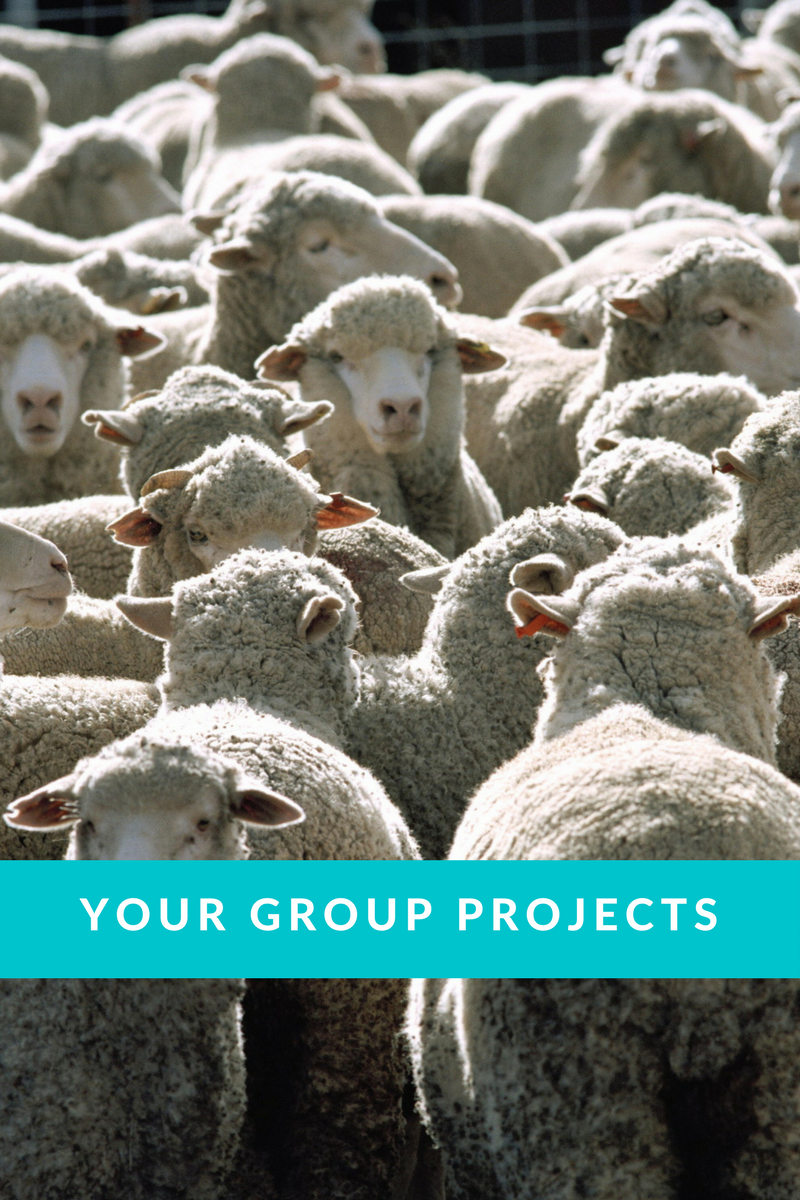Incorporating a group digital project
Introducing a group project
The following page was used to introduce students to the group project, which was the digital element of this class. In addition to this guidance and more specific handouts, students a) met as groups during several class period ‘workshops’; b) met independently outside of class (minimized through class work); and c) met with me as a group. The class was also supported with a UNC Graduate Research Consultant, who provided minimal but essential input on group projects. The text which follows is deliberate in it’s experimental tenor – it is intended to encourage students to try new things and to push their own expectations in terms of their ability to produce and communicate digitally.
This page introduces you to your group projects. As you might have guessed if you looked anywhere else on this website, it is still under construction for our class. It will have several different features, some of which will be only privately accessible in order to comply with our confidentiality agreements. Please read on to find out much of what you need to know about the group projects…
What is a group?
Funny you should ask. We have a new geographer starting in the department next year, Paul Delamater, who asks the question ‘what is a herd?’ Though not immediately relevant to our question, it ties in nicely with my sheep graphic. Your groups will be determined and assigned by me following a ‘skills and interests assessment’ you will be filling out in class. They will not be too big so as to make any out-of-class coordination a bit easier for you.
What is the group project?
The group project is going to be a page or series of pages added to this website. In short, you will be doing a bit of digital story-telling by drawing upon a theme or several themes that crosshatch your oral histories or place geographies – but NOT using academic language. You will be translating what are really abstract ideas and often burdensome academic language into engagements that anyone could appreciate. We will be going through different examples and possibilities in class, but a nice example of very doable digital storytelling can be found on the Back Ways blog. Now, I’m pretty biased because two of my PhD students have worked on this project, but you can get a sense of some of the possibilities for you on this one site – images, text, sound. You could also imagine producing a video like the one I will show you from a previous class. What you do will partly depend on your group and its interests and skills.
OK, but what are we DOING?
I have built into the class periods opportunities to work with your group, and this is one of the reasons that we need everyone to have their data collection completed and their analysis of their independent projects started by the end of break and into our workshop 3 – you will need to know the major themes of your own data in order to start working on your group project. These are the steps you might envision that will be playing out, sometimes in class and sometimes out of class:
- Get to know each other a bit.
- Share your individual projects with each other. This is also a really nice opportunity to talk through your ideas for analysis.
- Find common themes across your individual projects. Consider which ones are the most compelling and most interesting. Pick one, or a couple that are related.
- Think about how you would use your collective data to say something significant about geographies of religion from the standpoint of that theme. Think about how looking across your individual projects might reveal interesting contrasts and differences, compelling similarities, etc. Each person will think about how their own data corresponds to this theme and begin to identify the most interesting and relevant evidence.
- Figure out which discussions in the literature are most relevant. You will eventually need to ‘translate’ these ideas into normal language.
- Write an abstract of what your project is about. This will both be useful in the future, and allow you (and me) to make sure you have a clear direction.
- Brainstorm what you want your digital product to look like and contain, but being realistic in relation to your group’s skills. If you don’t have the skills to do what you want within your group, let us know and we will see if we can make it happen.
- Divide up tasks, figure out how to work collaboratively as a group. Do you want to use a communication tool (Slack, dropbox, google docs)? Set yourselves deadlines – I’ll be setting these after spring break as well.
- (at the end of the class, there will be an opportunity for each of you to rate your own participation and that of every other member of your group, and this goes into your participation grade for the class. I don’t think I even have to mention it to this class because you all have been wonderful, but just clarifying here that you are responsible for your participation).
- Review your ideas with us and create your project.
- Present your project to your peers during our final exam period. Celebrate our collective success!
Why a group project?
The group project allows you to a) create something that will be, for most of you, a more common means of future communication than is a term paper; b) work collaboratively, a skill that benefits you in all kinds of ways; c) practice using multiple sources of primary qualitative data, but in a supported environment with friends.
What next?
We will be filling in more bits and pieces as we proceed.
